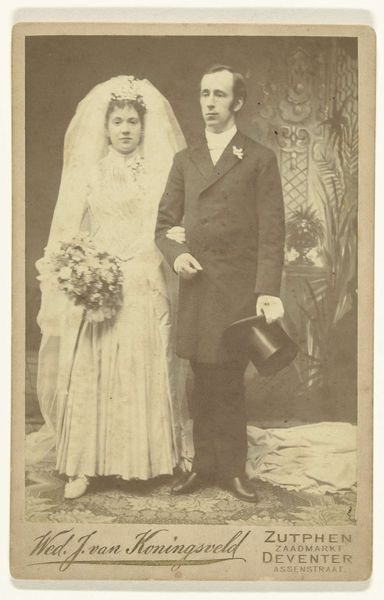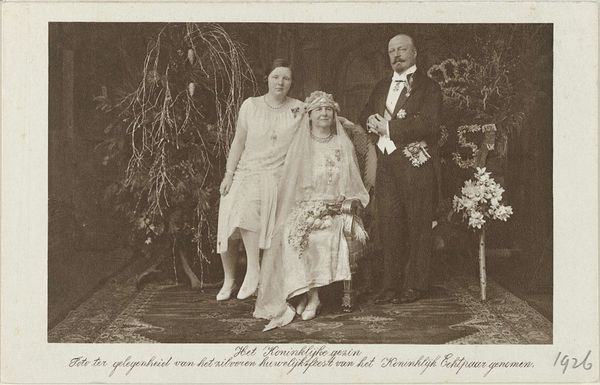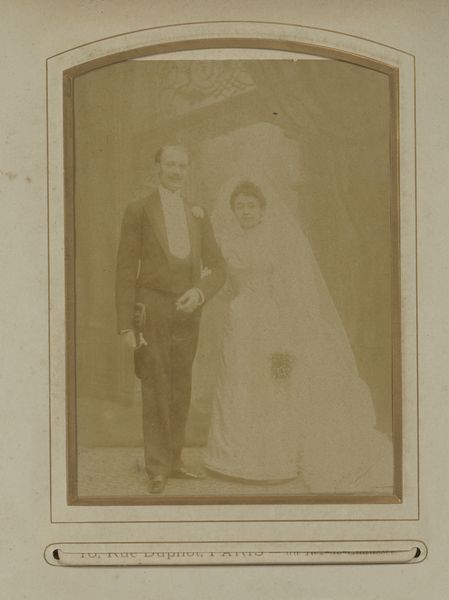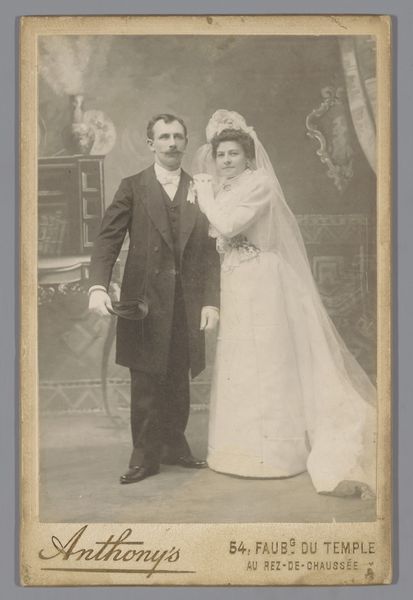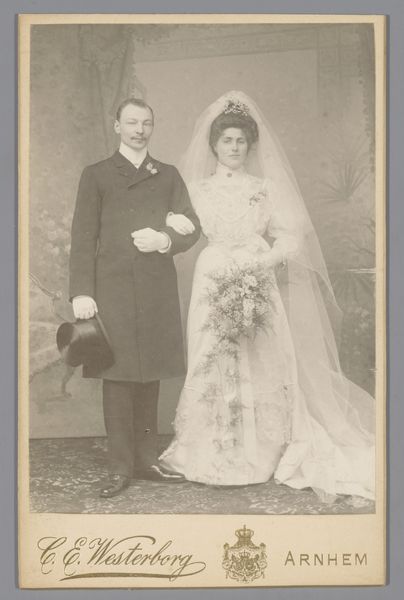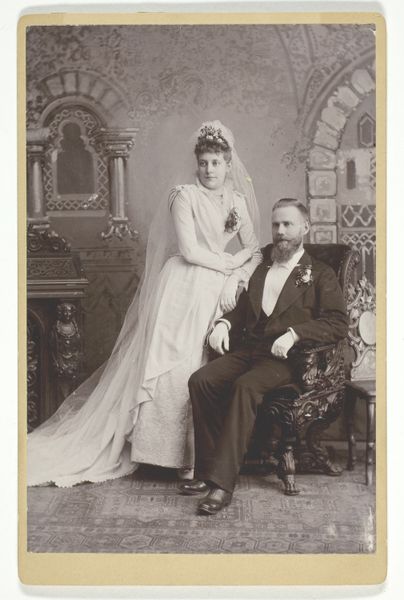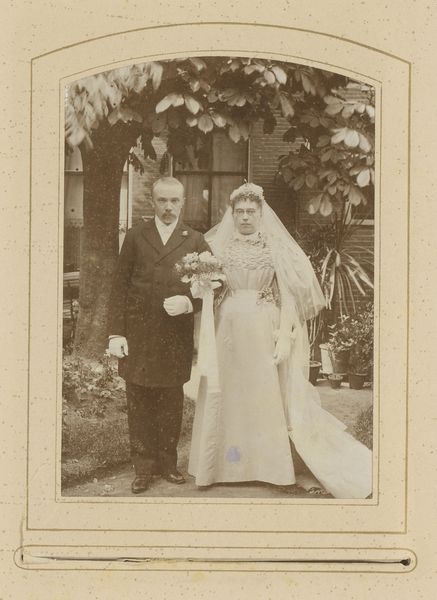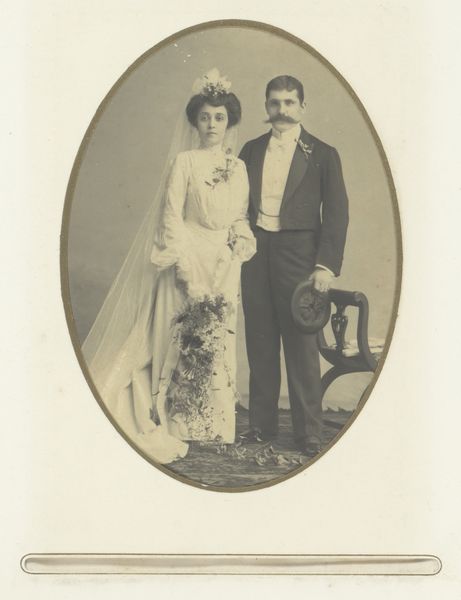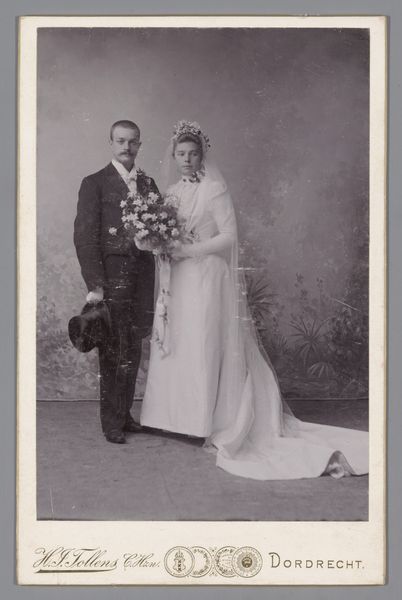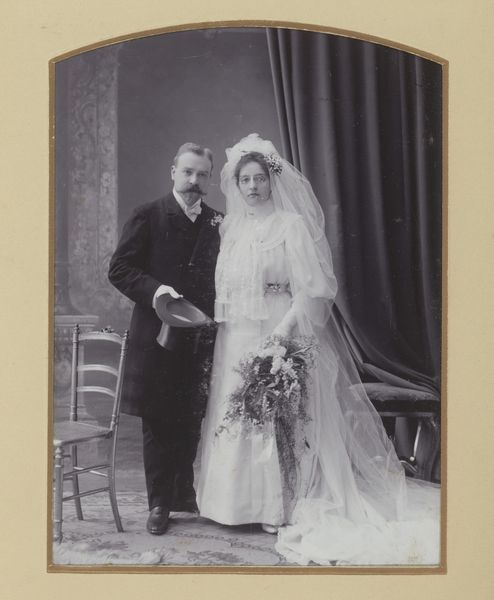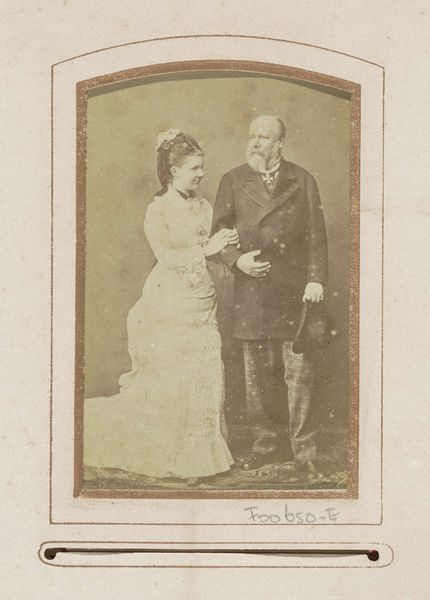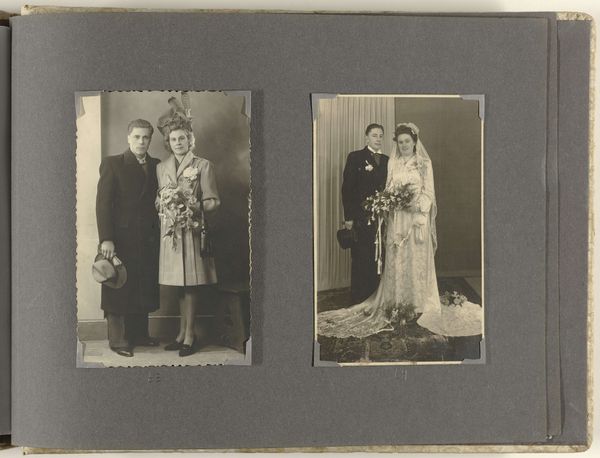
Portret van Wilhelmina, koningin der Nederlanden, en Hendrik van Mecklenburg-Schwerin 1926
0:00
0:00
Dimensions: height 90 mm, width 141 mm
Copyright: Rijks Museum: Open Domain
Curator: Here we have an intriguing photograph from 1926. It's entitled "Portret van Wilhelmina, koningin der Nederlanden, en Hendrik van Mecklenburg-Schwerin," which translates to "Portrait of Wilhelmina, Queen of the Netherlands, and Henry of Mecklenburg-Schwerin." Editor: It has an almost sepia quality, though that might be age as much as intent. A regal solemnity—you can feel the weight of history. Do you get that? Curator: Precisely. The composition is very formal. The figures are positioned centrally, and notice the floral arrangements which are carefully placed on either side, creating symmetry that underscores their status. There is a wreath behind them that reads "25". It is more than likely that the work commemorates their 25th wedding anniversary. Editor: You can practically smell the history in the shot! And I am fixated on the floral arrangement in the foreground! But in truth, the piece comes off as emotionally remote and stiff; yet somehow I see it conveys an intimate story... it's funny, really! It is staged as could be; and, well, as a wedding portrait would, and should! Curator: Absolutely. Consider how the tonality contributes. The limited contrast—ranging from near-whites in Wilhelmina’s dress to near-blacks in Hendrik’s suit—constricts the emotive range, maintaining a sense of reserved dignity so very important for royalty. It highlights also the clear and obvious constraints that come with living a Royal life under scrutiny. Editor: Yes, it does indeed capture the aesthetic ideals of a bygone era, doesn't it? It has the stiffness, yet romance of its own age. I feel as though I could dive right into it! But, more importantly... What do you think about the way she posed for the portrait? Doesn't that transmit volumes? Curator: It does. The use of light and shadow across the planes of Wilhelmina’s face, directing your attention to certain facial aspects... You start unpacking the underlying framework by reading the subtle visual language. It certainly is rich, connotative photography. Editor: This piece makes me curious about its own historical context—its original audience, its role as document or ideal. There’s a palpable story lurking here; it could spin us yarns forever and ever.
Comments
No comments
Be the first to comment and join the conversation on the ultimate creative platform.
